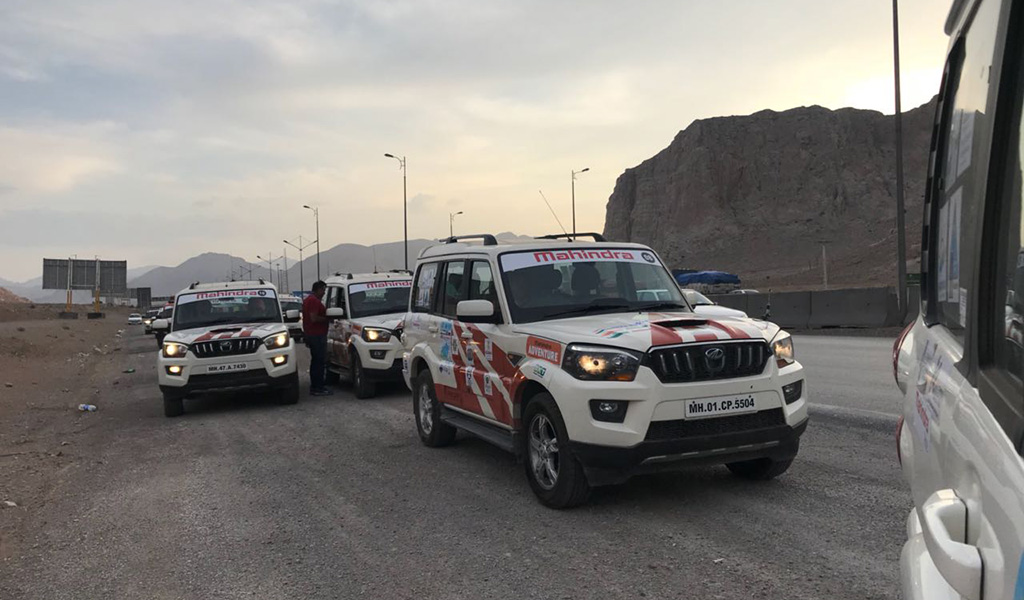In the tyre tracks of our ancestors on the INSTC – International North South Transport Corridor

To recap the INSTC
We are driving the International North South Transport Corridor, which also commemorates 70 years of India-Russia friendship. The INSTC Friendship Rally kicked off in India a couple of months ago, which the Russians on this drive participated with great enthusiasm criss-crossing the country and visiting Russian installations, diplomatic missions and places of Indo-Russian cooperation. Interest from the Indians only kicked off when our fleet of Scorpios and XUVs provided by Mahindra Adventure landed at the Bandar Abbas port in southern Iran, and now we are driving north through Iran.
Our task at hand, supported and initiated by the Indian government, is to popularise the INSTC, a trade route that connects India to Europe and is slated to drastically cut down both the time and cost of goods shipment both to and from India. The cost estimate for goods transport is 30 per cent cheaper while the distance is 40 per cent shorter than the current route. And also the INSTC will be a counter China’s One Belt One Road project.
“It is said that 12,000 Indian merchants used to ply this route and there are even graves of these Indians merchants out here in Iran”
INSTC isn’t a new trade route
This is, more or less, the same route that Indian merchants, centuries ago, used to transport goods to Europe. It is said that 12,000 Indian merchants used to ply this route and there are even graves of these Indians merchants out here in Iran.
The landscape is harsh and desolate and for the convenience of traders there were Caravanserais, basically shelter with water and shade for traders. And these still exist – Iran is after all an ancient country and there’s ancient stuff all over the place (mosques, cities, ruins, so much!). The Caravanserais are in ruins of course, but they still exist and we pass quite a few of them on the road from Bandar Abbas to Shiraz. These look big enough to offer shelter to an entire caravan but there are also smaller versions with just a shelter and a well in it and these too are plentiful along our route.
An interesting story on the INSTC
In the 1453 the Turks (Ottoman empire) invaded Constantinople (Byzantine empire) and the aforementioned route used by Indian and other traders was no longer safe. That forced the Europeans to get on to ships and discover new routes – the first to arrive in India was the Portuguese Vasco da Gama who landed in Calicut, fought with the Zamorins, did a deal with them, then came to Cochin (Kochi), did a deal with the kings there (both who were already trading with the Arabs), and sold the goods he picked up in India at a 400 per cent markup in Portugal. Trade, you see.
This was the forerunner to the Brits washing up to our shores and India losing her independence. And it can all be traced back to a trade route getting blocked! This gives you an idea of the significance of the INSTC, and why its so important India has a counter to China’s OBOR.


